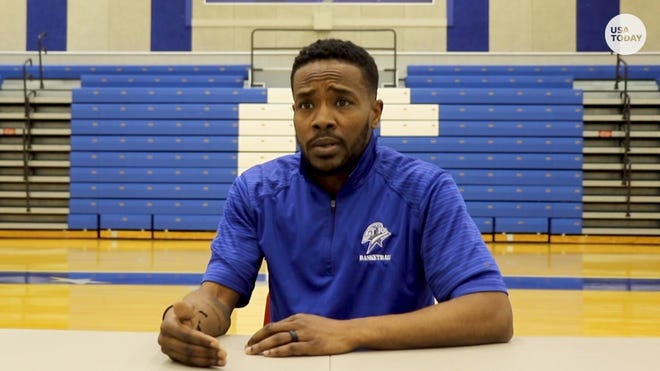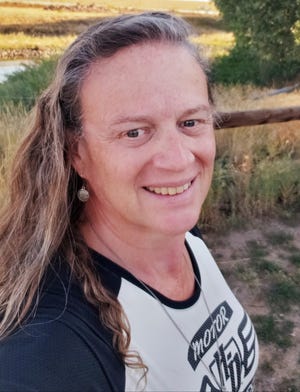
Editor’s note: This is the second in a series of guest columns by Dana Rasmussen meant to advance understanding of transgender people and the issues confronting them in Pennsylvania. Rasmussen (She/Her/Hers) is a member of the TransFamily of NWPA Board of Directors. This column addresses trans feminine sports participation.

Does enough of an issue exist with transgender girls/women participation in sports to warrant a law governing trans lives and hindering their social development? Let’s discuss three common questions on the topic:
1. Do trans girls/women have an unfair physical advantage in sports?
Before we begin: Can you name a trans girl or woman athlete through college age who has dominated her sport after coming out or beginning her transition?
The effects of Hormone Replacement Therapy (HRT) and puberty blockers replace or reduce testosterone production in trans females to levels similar to that of cisgender females. Without higher levels of testosterone, our strength diminishes rather quickly. It diminishes so much that the International Olympic Committee allowed trans athletes to compete starting in 2004.
Can you name a trans girl or woman who has dominated her sport in the Olympics since 2004?
The National Collegiate Athletic Association (NCAA) trans guidelines stated this in 2011: “Transgender women display a great deal of physical variation, just as there is a great deal of natural variation in physical size and ability among non-transgender women and men. Many people may have a stereotype that all transgender women are unusually tall and have large bones and muscles. But that is not true. A male-to-female transgender woman may be small and slight, even if she is not on hormone blockers or taking estrogen. It is important not to overgeneralize. The assumption that all male-bodied people are taller, stronger, and more highly skilled in a sport than all female-bodied people is not accurate.”

Can you name a trans girl or woman who has dominated her sport during her NCAA eligibility?
The Pennsylvania Interscholastic Athletic Association (PIAA) makes these statements in their policies and procedures guide: “(PIAA) is committed to the principles of equal opportunity and treatment for all individuals involved in interscholastic athletics. PIAA believes that all boys and girls, coaches, contest officials, and athletic administrators should have equal opportunity to participate in, coach, officiate, and administer at all levels of interscholastic athletics and receive equal treatment, without regard to race, color, religion, gender, age, national origin, or ethnic background.”
“Where a student’s gender is questioned or uncertain, the decision of the principal as to the student’s gender will be accepted by PIAA.”
The 2017 report titled “Age of Individuals who Identify as Transgender in the United States” from the Williams Institute at the UCLA School of Law, estimates there are 5,250 trans Pennsylvanians aged 13 to 17. Assuming roughly two-thirds of these are trans girls, that gives us 3,465 trans girls. The Pennsylvania Department of Education lists 394,438 girls enrolled in 2016-17. The website statista.com indicates 38% (150,250) participated in sports. Applying this percentage to the number of trans girls, we arrive at 1,316 or 0.01% of Pennsylvania’s 12.79 million 2017 population.
Can you name any of these 1,316 Pennsylvania trans girls who have dominated her sport since 2017?
2. Will trans females sexually assault other girls and women in the locker room or bathroom?
Trans girls and women are generally incapable of the male functions needed to perpetrate these acts. Hormone replacement therapy and puberty blockers bring testosterone to an extremely low level, affecting libido and capability of sexual function. Without the capability to have a typical male sexual function, the likelihood of a trans girl or woman being capable of such an attack becomes minimal.
Trans girls and women are often affected by gender dysphoria to the point that the concept of taking a typical man’s role for a sexual encounter is so extremely uncomfortable that we would remove ourselves from the situation as quickly as possible.
3. Are women’s sports threatened by trans girls/women’s participation?
On March 31, 2021 (coincidentally the 12th annual Transgender Day of Visibility), Outsports.com reported on a letter penned by the Gay & Lesbian Alliance Against Defamation (GLAAD). “More than 465 superstars and everyday feminists added their names to the letter objecting to the targeting of trans women and girls.” Among those who signed were United States Women’s National Soccer Team members: Megan Rapinoe, Ali Krieger and Ashlyn Harris.
One of the strongest statements in the letter read, “We all must fight against the unnecessary and unethical barriers placed on trans women and girls by lawmakers and those who co-opt the feminist label in the name of division and hatred. Our feminism must be unapologetically expansive so that we can leave the door open for future generations.”
Trans girls/women are girls/women. Medical and mental health professionals have stated this. University researchers have stated this. Sports organizations have stated this. Should we not listen to the experts?
Dana Rasmussen (She/Her/Hers) is a member of the TransFamily of NWPA Board of Directors.